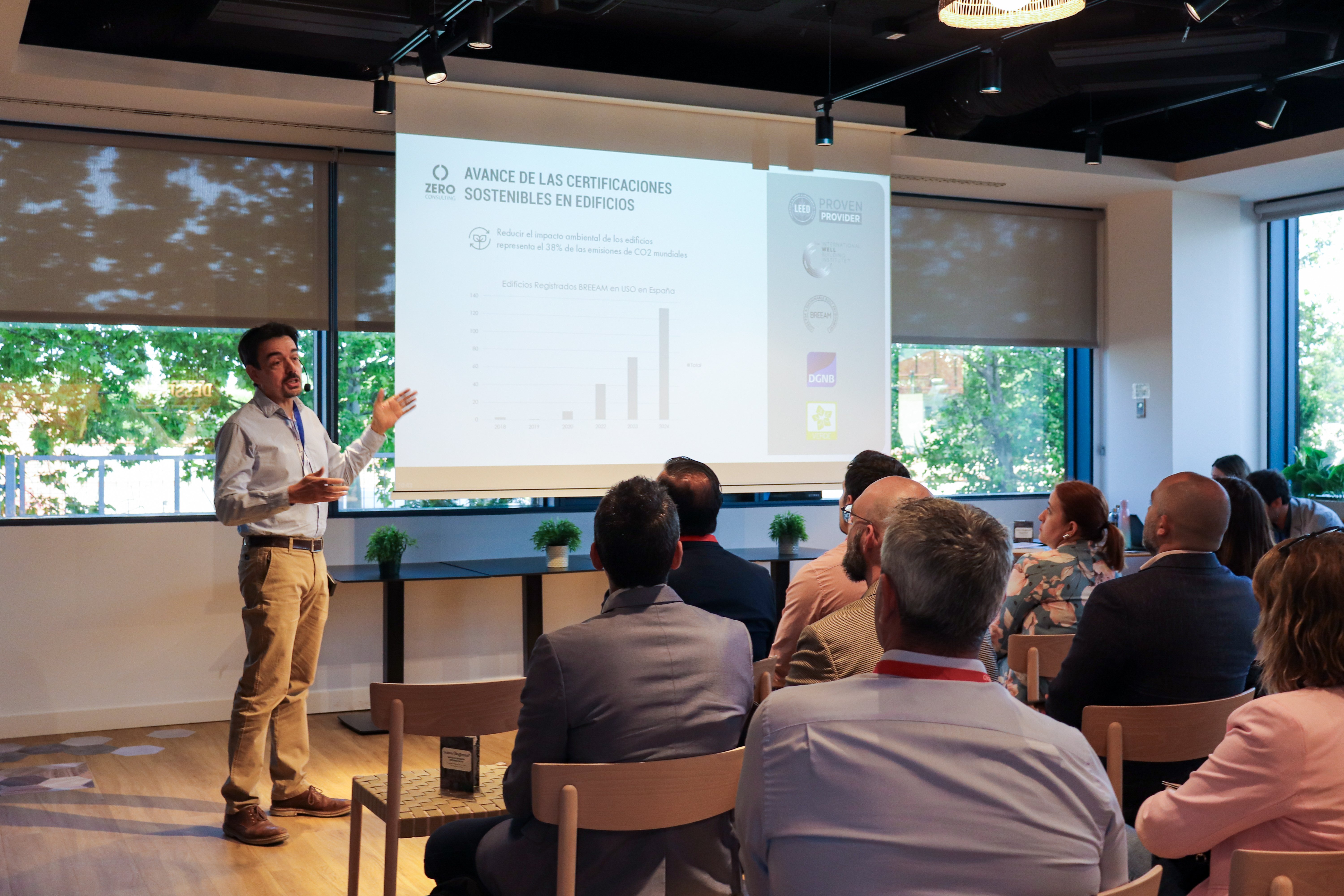Today, the preservation of the environment and the responsible management of natural resources have acquired an unprecedented relevance in all sectors of society and the economy. Within this framework, the building industry and real estate play a crucial role, as they are responsible for 36% of greenhouse gas emissions and 40% of energy consumption in Europe, according to the European Commission.
Faced with this challenge, Facility Management or FM is presented as an essential tool to reduce the carbon footprint in the maintenance processes of buildings and real estate assets. Adopting a holistic and sustainable approach to the management of these facilities can have a significant positive impact on the environment. In this article, we analyse how Facility Management can move towards sustainability and present the new model Sodexo InGreen IFM, a project promoted by Sodexo Iberia in which we have had the pleasure of collaborating.
Sustainability in Facility Management: why is it important?
In a global context marked by international agreements such as the Paris Agreement and the European Green Deal, the European Commission has promoted the creation of regulations that seek to promote sustainability in all sectors, including the construction and maintenance of buildings. Regulations such as the European Taxonomy, the CSRD and the SFDR set ambitious targets to mitigate climate change and make Europe the first carbon-neutral continent by 2050.
In this scenario, the Facility Manager emerges as the ideal actor to implement sustainable criteria and lead a change towards sustainability. With a global and strategic vision of facilities management, the Facility Manager thus becomes a driver of sustainability, intervening in the entire life cycle of a facility, ensuring compliance with current regulations and generating added value for the company.
Data: the first step towards sustainability
The transformation to a sustainable Facility Management model starts with obtaining and analysing accurate data to understand the performance of buildings and their systems. The collection of this data, through sensors or building management systems (BMS), allows the efficiency and effectiveness of assets to be assessed, facilitating the identification of areas for improvement according to site specificities.
These data are essential to determine the critical points where to intervene to improve sustainability, as well as to monitor the performance of the building after the implementation of sustainable measures.
Main areas of sustainable intervention
Once the building's performance is understood, it is vital to establish key strategies to improve its sustainability. These strategies can cover a number of management areas, such as:
- Reduction of energy consumption: Identification of opportunities to improve energy efficiency through advanced technologies and responsible energy use practices.
- Efficient waste management: Implementation of policies that promote the reduction, reuse and recycling of materials, minimising environmental impact and generating economic and social value.
- Sustainable cleaning and maintenance: Development of systematic programmes to ensure the cleanliness and maintenance of the facilities, prolonging their useful life in a sustainable manner.
- Social commitment and good governance: Integrating responsible and ethical practices into all facets of facilities management, promoting inclusion, diversity and equity.
- Selection of sustainable suppliers: Choice of suppliers aligned with the principles of sustainability, ensuring that the products and services purchased contribute to the sustainable objectives of Facility Management.

Active participation of users
User engagement in the responsible use of building assets is crucial to promote sustainability in Facility Management. By recognising the occupants as key stakeholders, a culture of shared responsibility for the efficient management of resources and the proper maintenance of facilities is promoted.
The direct involvement of users not only optimises the operational performance of assets, but also increases environmental awareness and a sense of ownership of the working or living environment. Gathering feedback through surveys, meetings or participation platforms allows identifying areas for improvement and adapting policies and services to users' needs.
From theory to practice: Sodexo InGreen IFM
A few weeks ago, the Sodexo InGreen IFM project was launched, which Zero Consulting has been closely involved with. This model follows the success of the InGreen model applied to Sodexo's food services, and represents a significant step forward in terms of sustainable operation.
It is a comprehensive sustainable operation model in Facility Management services, designed to generate a positive impact on people, businesses and the environment. The model is aligned with the main sustainability certifications, such as LEED, BREEAM and WELL.
Some of the key aspects of Sodexo InGreen include:
- 360º Strategy: Cross-cutting impact throughout the value chain.
- Measurable objectives: Management based on measurable targets.
- Personalised roadmap: Adaptation to the needs and expectations of each client.
- Alignment with SDGs: Compliance with the Sustainable Development Goals and sustainability certifications such as WELL, BREEAM and LEED.
- Reducing costs and emissions: Implementation of efficient measures adapted to each company and service.

Artur Garcia, CEO of Zero Consulting, at the presentation of the Sodexo Ingreen IFM project
In conclusion, the integration of sustainability in Facility Management is not only essential, but necessary to promote positive and lasting change in the management of facilities and buildings. This approach goes beyond simply reducing operating costs; it is about adopting practices that protect and preserve our environment for future generations.
The Sodexo InGreen IFM model not only focuses on energy efficiency and the reduction of greenhouse gas emissions, but also encompasses integrated waste management, promoting the reduction, reuse and recycling of materials. It also incorporates cleaning and maintenance policies that prolong the useful life of the facilities, ensuring their optimal operation in a sustainable manner.


